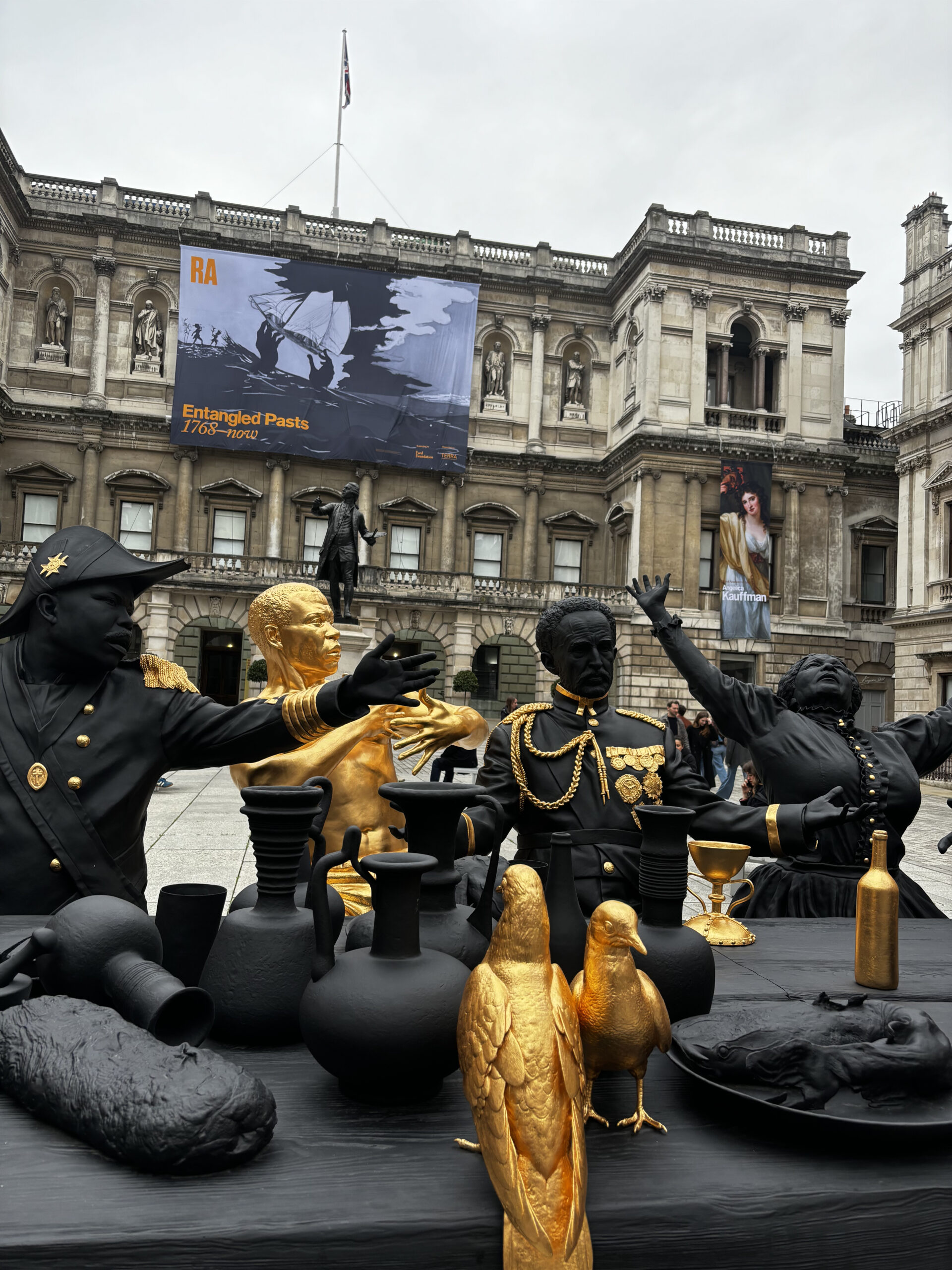Art and the Black Identity
Art is subjective yet it holds an objective place in our cultural life. It objectively is considered a creative form that beautifies life, adds a surrealist imagination, or archives historical periods and life experiences. The first time I engaged with art was in primary school when we were shown portraits of Tudor nobilities, for us to have a clearer picture of the murdered wives of King Henry VIII.. These beautiful portraits project a regality and opulence reserved for the English upper class.
An opulence visible by strings of pearls, feathered fans and garnet rings. What was striking to me was their pale white faces. So unfamiliar, they were they to me.
Soon after, I visited The National Gallery with my class. As I strolled through these magnificent halls filled with historic paintings, I couldn’t help but think the same thought I had when I had seen the portraits of the Tudor wives. Nothing here resembles me. Staring at more nobility, horses, Christian imaginings and landscapes, it felt so far removed from my reality. Subconsciously, I began to believe three (3) things: Black people did not exist in Europe during this time, Black people did not paint and art was for white people as evidenced by the demographic who split into each room. Innocent in my conviction, the school trip bored me.
The older I get, the sooner I learn that Black people did exist in Europe in the nineteenth (19th) century. This changed the way I viewed art significantly. Most of the paintings I had seen throughout my life were not purely pieces created out of pleasure, they were also forms of archive. They existed in a time when paintings also had educational/archival value and informed people of the realities of their world. The absence of Black people on paintings from that era was, in this sense deliberate acts of erasure, designed to distort historical facts and perpetuate the idea that Black people were either nonexistent or unfit to be depicted since their presence would defile such a lovely form of expression. This has created the narrative and the perception—which persists to this day—that art is an exclusive, inaccessible medium reserved only for the Elite white Western European nobilities
It is my understanding that the Royal Academy of Art’s (RA) new exhibition, Entangled Pasts 1768-now: Art, Colonialism and Change, sought to reckon with this
issue. The exhibition explores the connection between art associated with The Royal Academy and Britain’s colonial histories. The exhibition’s programme, shares that the institution’s first President, Joshua Reynolds, called the RA an ‘ornament’ to Britain’s empire. The exhibition is RA’s attempt to bring out the skeletons from its closet and contend with its links to the British Empire. In doing this, RA shows just how art played a role in colonialism and the horrific impact of human degradation and exploitation.
As you enter RA’s courtyard, you encounter The First Supper by Travares Strachan. Strachan’s sculpture has replaced Jesus and his twelve disciples with monumental figures in Black history. These twelve figures include Haile Sailesse (who ironically replaces Jesus’ place at the table), Marcus Garvey, Shirley Chisolm and Sister Rosetta Tharpe. It is truly a monumental sight to see these historical figures covered in black and gold, seated at a table adorned with gold birds, goblets and even a microphone.
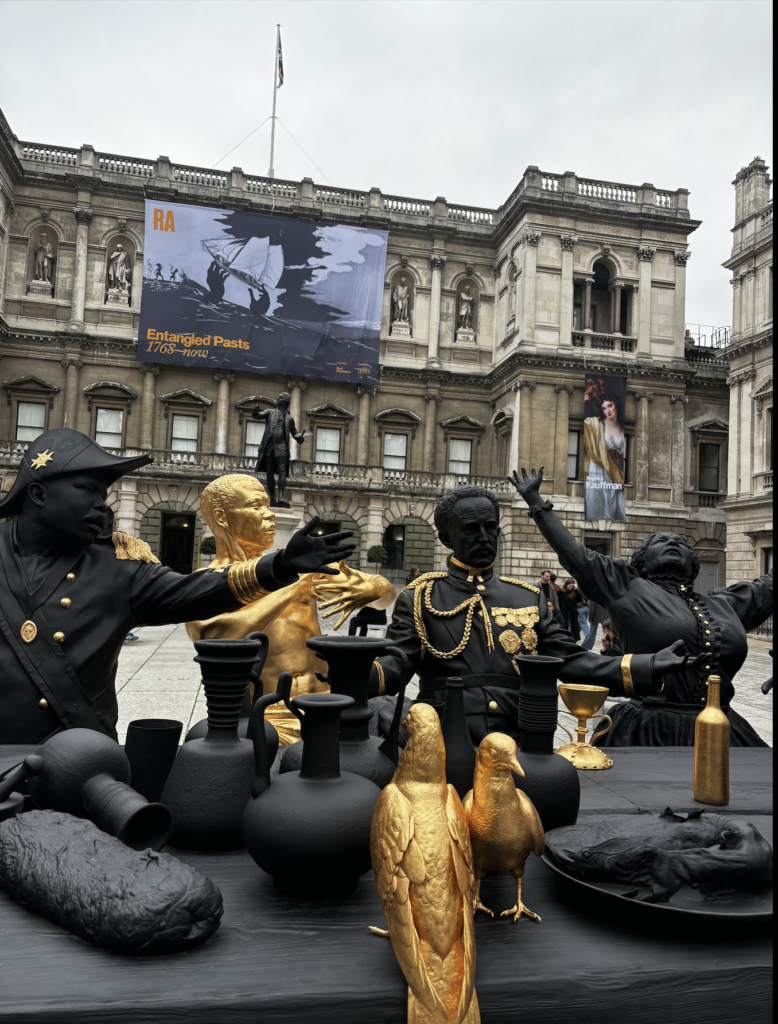
It conjures the feeling that seated at this table, are the ‘Saints’ of Black history, pioneers who have defied the brute force of racist white inferior subjugation and, according to Strachan, deserve to be edified. Expectedly, a throng of people took pictures and read the placard to know the identities of the twelve figures. In retrospect.
One of the reasons I was anticipating Entangled Pasts was because I knew a Kerry James Marshall painting was on display. Marshall is a painter whose work I admire deeply. His work, to me, beautifully combines fantasy and realism. His paintings of Black people and their surroundings feel familiar yet in works such as Along the Way, where music notes hang above two lovers, it is also evident that his subjects exist in a world far removed from our own destitute and at times unbearably violent world.
Marshall’s Scipio Moorehead painting is also on the show. Scipio Moorehead was an enslaved African-American artist. Three main things are known about Scipio Moorehead: There is no concrete evidence of his artistic work. There is no concrete evidence of what he looked like and there is no concrete evidence that Scipio Moorehead ever became a free man. Marshall’s painting is an interpretation of Scipio’s self-portrait.
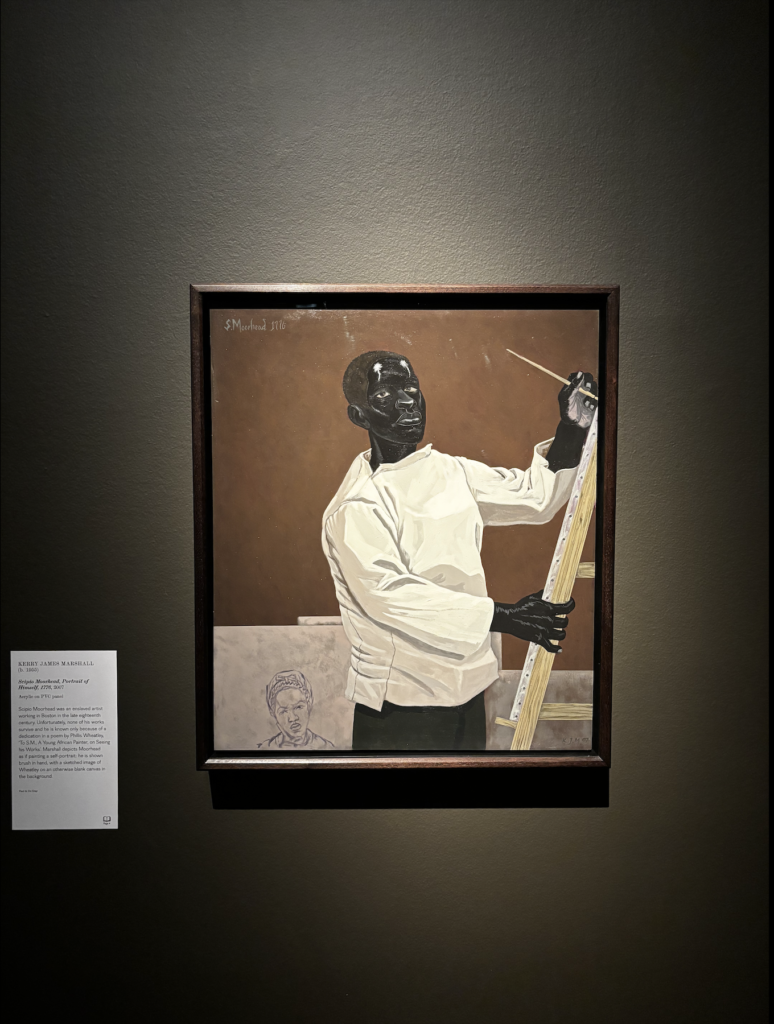
This painting is the first painting you encounter as you enter the rounded hall: it is a precursor to the many paintings of Black faces at the exhibition. It becomes apparent that, throughout colonialism, there were many Scipio Mooreheads.
Portraits of unidentified Black subjects tell a tale of how Black identity was portrayed during colonialism. The identity was nameless and, at times, faceless, it was an identity that was inanimate even though those colonised, kidnapped and enslaved were living, breathing, talking human beings. They needed to be dehumanised to justify the atrocities done to them and absolve the coloniser of their crimes.
These paintings depict a dark reality whereby self-actualisation, a core part of the human experience, was reserved for those who benefitted from the empire and those who benefited chose what self-actualisation looked like for those they colonised. Painted as anonymous portrait sitters, attendants, or barely perceptible people next to ornate picture frames were deliberate. To show the viewer that their actualisation was defined by forced labour that advanced the empire’s splendour, affluence, and liberty as we all as the aristocracy as a collective. Allow me to eliminate the term “self” from this actualisation. How could those colonised become actualised from such depths of dehumanisation? Were even perceived to desire such actualisation?
Two rooms in the exhibition are filled with colourful cutouts of enslaved Africans. It is an installation piece by Lubaina Himid called Naming the Money. Behind each cut-out is a small square paper which shares their old identity, the new identity given to them and how they reconcile the two. One reads,
My name is Masilo
They call me George
I used to dance barefoot
Now my feet are bleeding
But I have a friend.
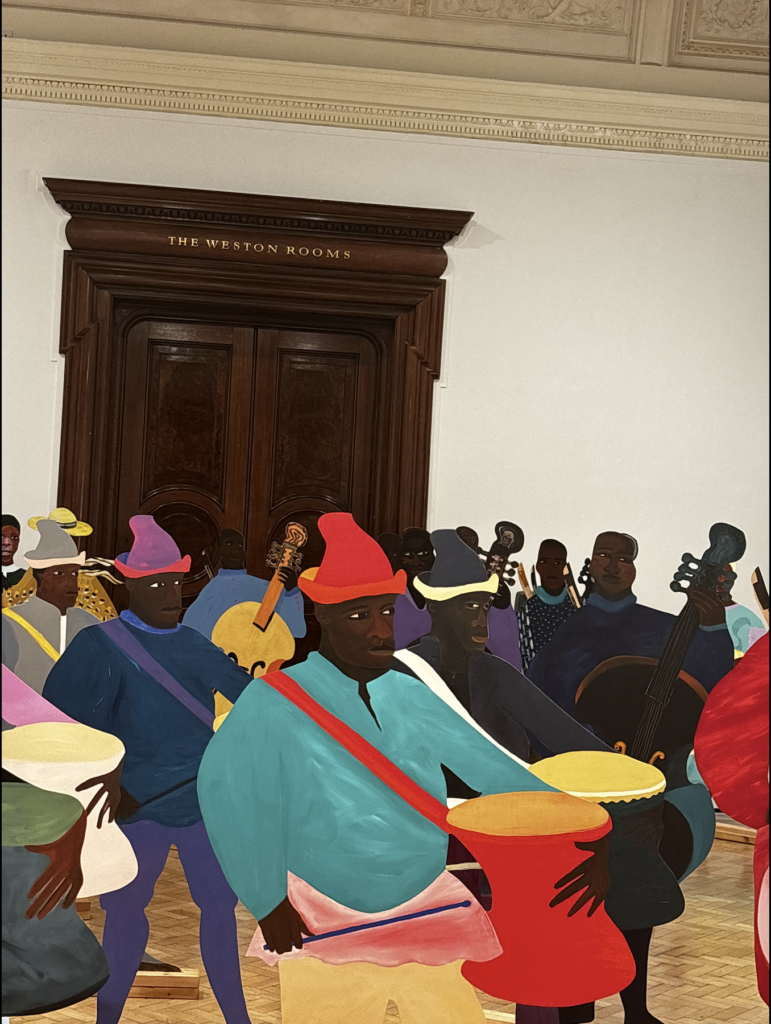
The installation is haunting because it is true. How did the enslaved reconcile with such great losses, aware that they could not return home and had to make sense of their new reality in captivity?
It is those who were nameless and extracted natural resources from their homes that built the Global North (the imperial world) to be what it is today. Yet, maybe this is why countries like the USA, the UK, Canada, Japan, Germany, Portugal, the Netherlands and France can present themselves as nations that are powerful from mere strength and determination alone because their roots were sown by those who are not documented in history. Yet, as we know, the legacy of those undocumented is visible in the continued wealth of the West and the inequality that underpins it as well as their current foreign policies
I wonder if Strachan’s sculpture should have been the final thing you see in the exhibition. After the various paintings that depicted histories lost and identities stolen, Stratchan’s piece would have lightened the mood and been a reminder that beyond such adversity, there continue to be triumphs and leading Black figures who have succeeded beyond what society may have determined for them. It could also be interpreted as the type of art and legacy RA now hopes to embody.
In Laura Cumming’s Guardian review of RA’s Entangled Past exhibition, she calls the exhibition, “the most radical show in RA’s history.” I question how this is radical. Reckoning with a past that has upheld RA’s wealth is not radical, it is simply sharing factual history rather than benefiting from it in silence. So many institutions continue to thrive from the foundation of the empire and its exploitation. It is not radical that they state what is true, it is radical when they dismantle it and pay back what is owed to the descendants of those who have had to be at the receiving end of the colonial violence. Using the term radical to describe institutions of white capitalist supremacy openly sharing how they were born, soils the term.
I would employ the RA to truly engage radically with the colonial past by truly creating more opportunities for minority communities to understand the power of art and how they can utilise it to depict a future that is not entangled by colonial legacies. I would encourage the RA to strategically invest in communities whose resources were looted to make their institution possible by creating infrastructure that allows these communities to develop, engage and divest from the colonial erasure they have been subjected to for over a century.
After the exhibition, I reflected on something Kerry James Marshall once said, “if you’re constantly being reminded of how your history and your narrative as a people were rooted in loss and decay then you’re in deep trouble. Once you make a certain kind of peace with the past, then you should be completely oriented towards speculation about the future.”
I would argue that as long as we live in a society still embossed with the stain of colonialism, the past cannot be made peace with but I do believe that art is a way for Black people to speculate about the future and to define our present.
Even though our existence as Black people has been and will continue to be politicised, the art we make does not have to be confined to the borders of politics. It can be in likeness with fantasy and spirituality as evidenced by the works of Naudaline Pierre or more true to our everyday realities like the work of Ian Mwesiga. What is important is that it is us archiving our expansive experiences, showing how our identities are rich with meaning and self-actualisation. That we are not nameless. The art of today, which envisions our future and captures our present, does not have to copy or resemble the art derived from the structural and creative invisibility of others. There is freedom of expression in knowing this.
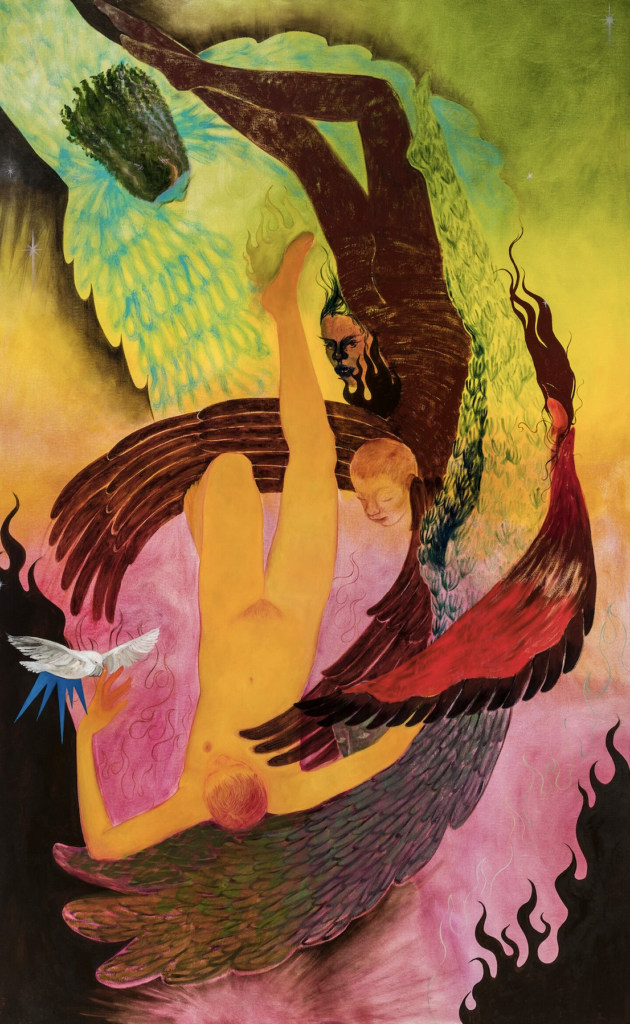
Recently, Slawn, a London-based artist sold his art piece titled “The three Yoruba brothers” for £31,000 at the renowned fine art company, Sotheby’s. The art piece, which depicts three golliwog-esque characters on wax print fabric, created an uproar on social media. Slawn decided to display his Yoruba ethnicity in a racialised caricature that neither praises nor progressively imagines Yoruba people. Sold at £31,000 or £31, the piece regurgitates the entangled past RA is currently trying to move on from.
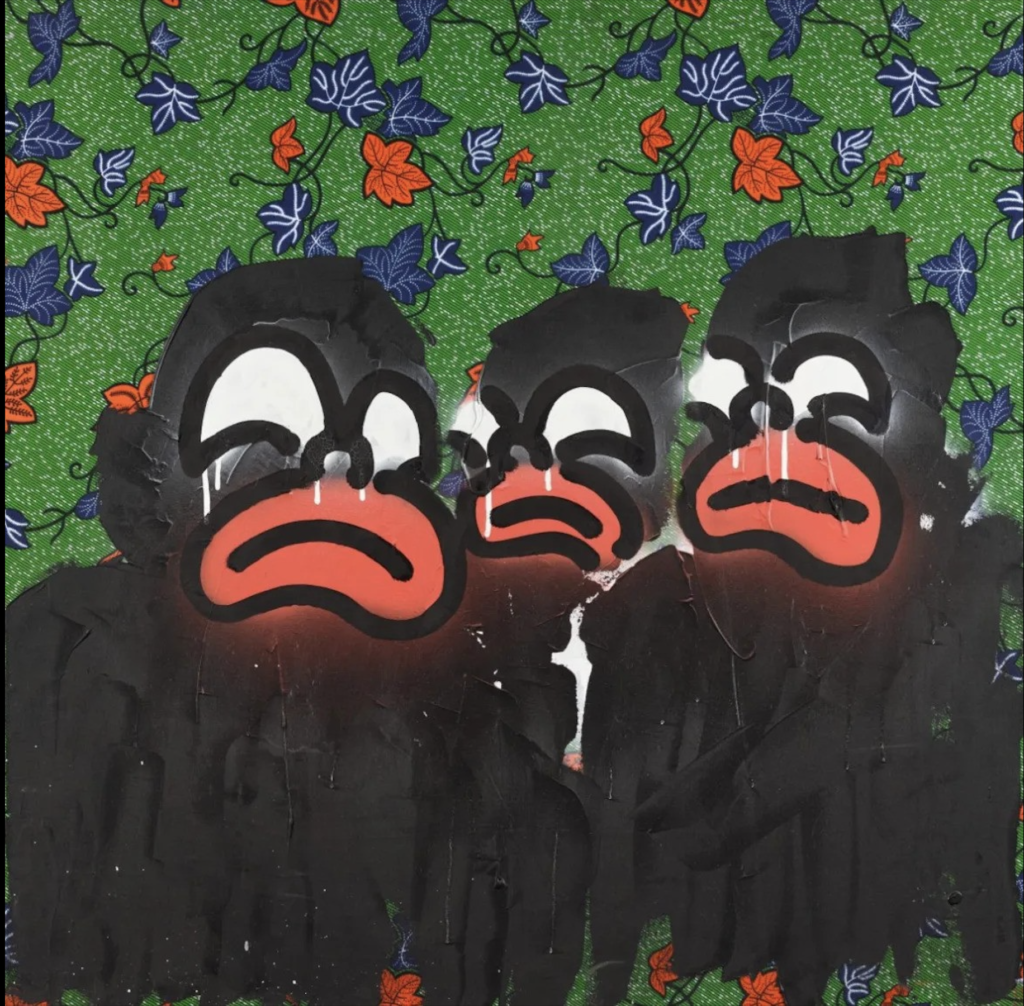
RA’s exhibition as well as the controversy of Slawn’s piece only cements the idea that art does yield power and influence. As long as paintings are bought and shared, they play a role in furthering the Black identity, Black history and Black futures.
What we do with that knowledge can contribute to our liberatory future. It is pertinent for us to decide that now.


